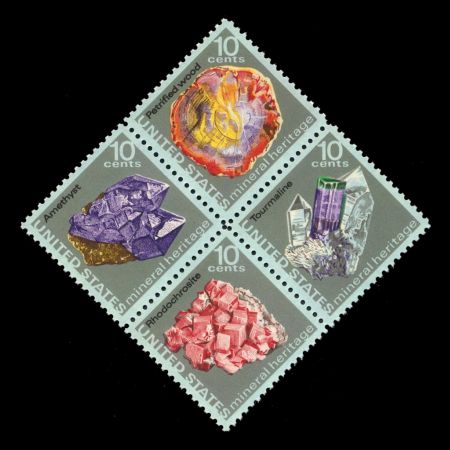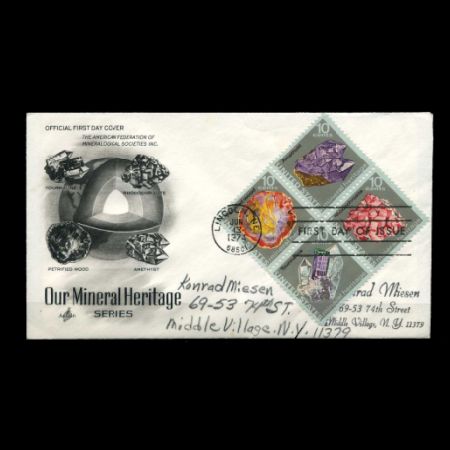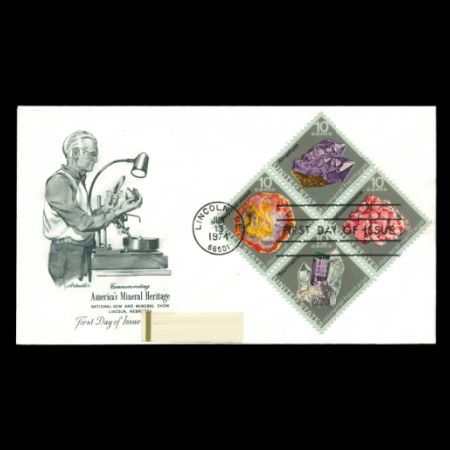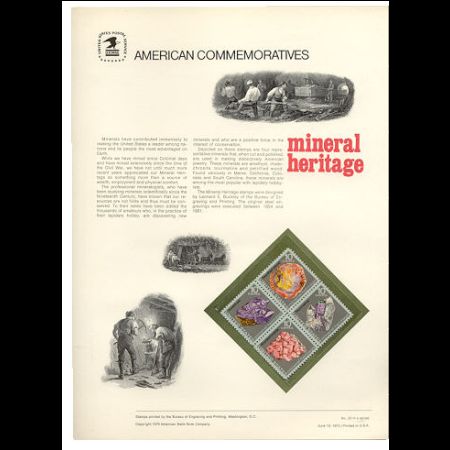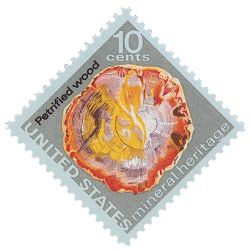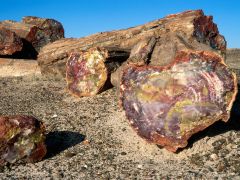|
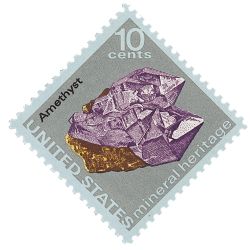
This stamp pictures an Amethyst, which is a type
of quartz that typically appears violet due to exposure to natural low
amounts of radiation. If also exposed to heat, they can be
colored yellow or bright green.
A violet, crystalline variety of quartz, amethyst
is the birthstone for February. When of good color and transparency, it
is valued as a semiprecious gem. Such stones normally are step-cut or
intaglio-carved. It occurs in cavities in many rock types and is found
in the Ural Mountains, Brazil, Sri Lanka, and the United States.
Ancient Greeks attributed various powers to amethyst, particularly that
of protecting against drunkenness and passion.
|
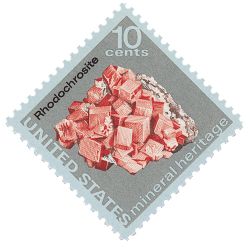
Rhodochrosite, a mineral colored rose
red. The color is due to the presence of manganese, a natural
metal element that has important industrial
uses. Rhodochrosite is often mined so that the manganese may
be extracted.
Rhodochrosite, a manganese carbonate mineral, is a
minor ore of manganese used principally as a decorative stone and
gemstone. It normally has shiny, rose-red, intricately banded surfaces.
Rhodochrosite occurs in moderate- to low-temperature hydrothermal ore
veins, particularly of silver, lead, zinc, and copper, as well as in
high-temperature metamorphic deposits.
|
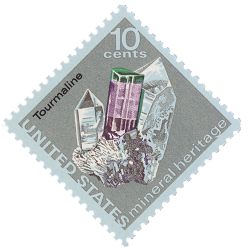
A Tourmaline, a mineral classified as a
"semi-precious gemstone". It can be found in a wide variety of
colors.
Complex boron and aluminum silicate minerals,
tourmalines form slender, three-, six-, or nine-sided prismatic
crystals in parallel or radiating groups. Tourmalines develop an
electrical charge when heated or deformed, and slabs cut perpendicular
to the long axis can polarize light. The best-developed tourmaline
crystals are most commonly found in pegmatite. Crystals also are found
in limestone altered by granitic intrusions. Tourmaline is the
birthstone for October.
|
